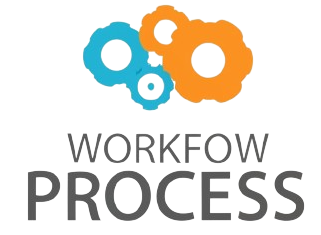Key principles of AI governance for agentic systems are crucial in today’s rapidly evolving technological landscape. Agentic systems, characterized by their autonomous decision-making capabilities, pose unique challenges that traditional governance frameworks may not adequately address. As these systems become more embedded in industries ranging from healthcare to finance and autonomous transport, establishing clear rules and ethical guidelines becomes imperative. This article explores foundational principles to ensure that agentic AI systems operate safely, transparently, and ethically, balancing innovation with risk management. Understanding these principles is essential for developers, policymakers, and organizations aiming to harness AI’s potential responsibly.
Understanding agentic systems and their risks
Agentic systems are AI entities capable of making decisions and performing actions independently, often adapting to new situations without human intervention. Examples include autonomous drones, self-driving vehicles, and AI-driven financial trading bots. Their autonomy introduces distinct risks:
- Unpredictability: Due to adaptive learning, their behavior can diverge from initial programming.
- Accountability gaps: Determining responsibility for decisions can be complex.
- Ethical concerns: Decisions may impact human rights and fairness.
Addressing these requires governance models tailored specifically to the dynamic and self-directed nature of agentic AI.
Transparency and explainability as governance cornerstones
Transparency remains a cornerstone of trustworthy AI governance. For agentic systems, this means that their decision-making processes should be interpretable by stakeholders, including developers, regulators, and affected individuals. Explainability helps:
- Mitigate mistrust and fear surrounding AI decisions.
- Enable auditing and compliance checks.
- Facilitate accountability by connecting decisions to system reasoning.
Implementing transparency is challenging due to complex machine learning models, but techniques like interpretable models, post-hoc explanations, and audit logs are essential tools.
Ethical alignment and human oversight
Governance frameworks must ensure that agentic systems align with societal values and ethical norms. This involves embedding fairness, non-discrimination, privacy, and respect for human rights directly into AI behavior. Human oversight remains a critical safety net, ensuring intervention capabilities when systems exhibit unintended or harmful actions. Effective oversight mechanisms include:
- Real-time monitoring dashboards.
- Fail-safe and kill-switch functions.
- Periodic human review of system decisions.
Such integration helps mitigate risks without stifling the autonomous benefits that agentic systems provide.
Accountability frameworks and regulatory compliance
Establishing clear accountability is vital for managing legal and reputational risks associated with agentic AI. Governance should define who is responsible for: system design flaws, deployment errors, and unintended consequences. Accountability can be supported by:
| Aspect | Responsible party | Governance action |
|---|---|---|
| System development | AI developers and engineers | Conduct rigorous testing and validation |
| Deployment and operation | Implementing organizations | Ensure ethical deployment and ongoing monitoring |
| Regulatory compliance | Compliance officers and policymakers | Establish and enforce legal frameworks and standards |
Alignment with evolving laws, such as GDPR for data privacy or emerging AI-specific regulations, must be factored into governance protocols.
Continuous evaluation and adaptive governance
Given the evolving nature of both AI technology and societal expectations, governance must be an ongoing process. Continuous evaluation through performance audits, ethical impact assessments, and stakeholder feedback loops is essential. Adaptive governance frameworks allow rules and controls to evolve as agentic systems mature and their operational contexts change. This approach helps in:
- Identifying emerging risks and vulnerabilities.
- Incorporating new ethical insights and technical advances.
- Ensuring sustained public trust and compliance.
Only through a dynamic governance model can we strike the right balance between innovation and responsibility.
In conclusion, governing agentic AI systems demands a multifaceted approach that balances technical complexity with ethical responsibility. Transparency and explainability form the foundation for trust, while ethical alignment and human oversight ensure the system’s actions reflect societal values. Establishing clear accountability frameworks protects all stakeholders and fosters compliance with regulatory requirements. Lastly, continuous, adaptive governance acknowledges the evolving nature of AI, allowing policies and safeguards to remain relevant. By integrating these principles, organizations can leverage agentic AI’s potential without compromising safety, fairness, or accountability—paving the way for responsible innovation in an increasingly autonomous future.
